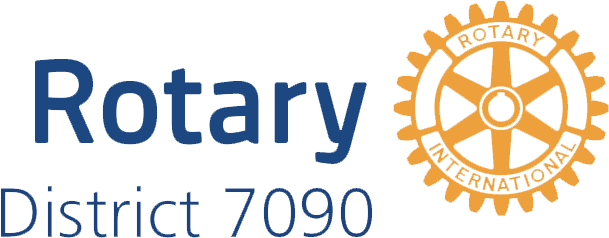District Governor, Rick Sterne, August 2012
DG Rick’s August Message
August is Membership and Retention month. Last week I received the article, following my message, from Jim Henry PDG –D6960, that I found so very thought provoking, I thought I would share it.
Rotary International has asked us to grow by 3% over the next year. I believe that we can reach this goal, but only if we focus on the needs of our members as Jim suggests. We must change as our society has changed. We must recognize the busier lifestyles that people face today. We must change with the times to remain relevant and to attract new members. We must continue to use social media tools in our recruitment process.
As I have challenged us in my HIGH FIVE! theme for this year, I believe that we must go back to the basics. We must focus on the three “Ps”: People, Programs, and Projects in order to attract and retain our members.
-
People - make sure that all your members feel that they are an important part of your Club.
-
Programs - make sure that your regular meetings are fun and interesting.
-
Projects - continue building pride through your great project work both locally and internationally.
Finally, ask someone to join Rotary!
If each of us brings one new member into Rotary during the coming year, we would achieve the Gold Medal in membership growth.
Our revised District Strategic Plan, which is posted on our website, clearly highlights membership growth as one of our priorities. Let’s heed Jim Henry’s warning and make sure that we are indeed serving the needs and interests of our members. Strong vibrant Clubs doing good service both locally and internationally will attract new members. Let’s ensure that your Club is one that you would like to join, if asked to join today!
Our District Conference at the Brantford Best Western Brant Park Inn on October 12-14th, 2012 will include two workshops on membership, one on new recruitment strategies, and the other on new and prospective member orientation. Please be sure to attend.
I will be starting my Club Official visits at the end of August. I look forward to meeting you and hearing about your Club and its successes. (click More below)
ARTICLE by JIM Henry, PDG D-6960:


ROTARY’S RECRUITING DEATH DANCE
Rotary clubs need members. Rotary International (RI) needs for its member clubs to grow and wants its network of local Rotary clubs to continue expanding. Without these ambitions, the worldwide Rotary network would eventually cease to exist. For as long as I have been participating beyond the club, RI presidents and district governors, with good intentions, have been recognizing clubs for membership gains. Excellent motives, but if one critically analyzes the custom, it becomes obvious that the practice is inward-looking organization centered, not member-centered. It comes from an inward point of view and is a Dance of Death, as indicated by the declining North American membership trend.
Clubs and RI need members. Both need the dues members pay. Both, as well as the Rotary Foundation (TRF), need the support they provide in order to survive, or, to put it more bluntly, continue advancing the Object of Rotary. From this point of view, recruiting new members is a given. Get new members. Start new clubs. Both actions bring new people into Rotary. Both generate capital to advance the Object of Rotary.
Both bring recognition to Rotary leaders. But the practice is resulting in Rotary’s decline because it focuses on clubs’ and RI’s needs for members, the dues they pay, and the donations they make; not on the needs the clubs and members have that motivate them to pay the dues and make the donations.
Retention-and-growth index, not net gains numbers
Focusing on the target audiences’ needs requires a fundamental change in operational philosophy and can be measured by a retention-and-growth (RG) index, not in recruiting or net gain numbers (which encourages focusing on recruiting.) Maintaining RG indexes requires keeping track of how many members are inducted and how many leave. With this index, clubs are incentivized to engage members in order to retain them. Retention-and-growth index recognition shifts local clubs’ priority from its point of view to that of its target audience – existing and potential members. It shifts RI’s priority from its point of view to that of its target audience – present and potential clubs.
Concentrating on members’ needs is a sophisticated and complex process, which is probably why it is generally ignored. It requires understanding that present and potential members, be they individuals or clubs, are the customer, the ultimate target audience. It requires leaders with the vision to recognize that Rotary at all levels must be target-audience centered, not self-centered. It requires knowing what the target audiences’ needs and wants are. It requires knowing the target audiences’ expectations and how they match with club and RI expectations. It requires constantly evaluating and evolving practices, projects, programs, and attitudes to meet the target audiences’ ever-changing needs and expectations. When examined under these microscopes, recruiting rather than attracting is much easier. From this mentality also comes the desire to start new clubs instead of the will and effort needed to redirect existing clubs – another myopic and organizational point of view that circumvents the sophisticated and complex issues that should have been addressed since the club’s initial organizational meeting.
Strong Leadership Required
This shift in direction requires strong leadership at all levels. It requires aligning brands, core values, and strategic plans with the target audiences’ points of view. After all, if an organization does not recognize the wants and needs of its target audience, it can’t have a clear vision on where to go, much less how to outline the path to get there. Leadership must set the example and center on delivering value to the target audience.
The name Rotary still holds a degree of Respect in many North American communities as indicated by the number of new members inducted in the past years. That hard-earned Respect is slowly melting away due to the number of members that leave because their reasons for joining were not satisfied, often because they were misled, or not led at all, regarding the benefits, privileges, and expectations when they join a local Rotary club. The target audience for clubs and RI is, in fact, expanding in most geographical areas. Unfortunately, the number of those leaving Rotary is also expanding, many of whom will not return or recommend membership to others. Rotary in North America could very well be forecasting Rotary International’s future.
To reverse our North American membership decline, Rotary at all levels must center efforts on what attracts present and future members to local clubs. Clubs can get a start by asking their membership committees to meet, in relaxed social settings, with small groups of existing members and asking these, or similar, questions:
- What do they like about the club?
- What in their club would they like to see improved or eliminated?
- Why would their target audience choose to join and stay in the club?
